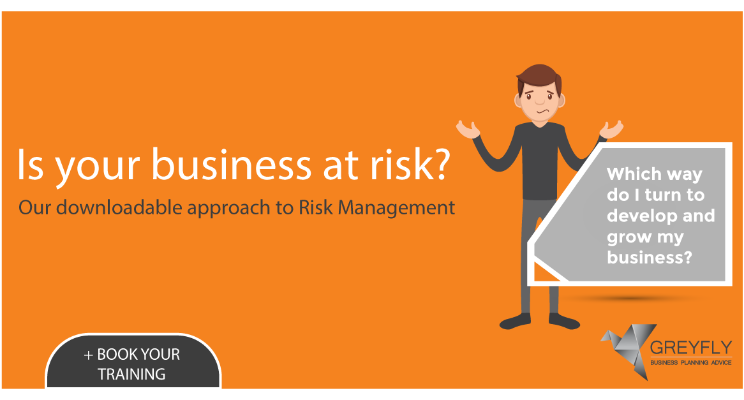- June 20, 2017
- Posted by: Lloyd Skinner
- Categories: Risk Management, Training & Talent Development

Lets’ face it, one of the biggest challenges facing any entrepreneur, business owner or indeed any executive is trying to work out what is important, how to prioritise and how to manage our precious time. Sound familiar?
Having now run Greyfly, and provided Business Planning and Project Delivery Advice to SMEs, for c9months I am convinced more than ever that the methods and expertise normally deployed within large corporate organisations and their projects will benefit SME’s to the same degree or even more!
Imagine this common scenario, you are doing a great job with your existing client base who are broadly pleased with your service, however, you don’t know which way to turn to develop and grow your business? What to do? What to do first? How to do it? Actually, a lot of executives take all these questions on and sadly can be left confused and struggling for headspace…..
Well if this sounds like you, don’t despair, as I said you certainly aren’t alone, actually in the old corporate world amongst other techniques one tried and tested method to work out your action plan is called Programme Management. Programme management is about working out what you are trying to achieve and then organising work based around a set of criteria, then the little matter of delivering….
As part of this programme management discipline as well as prioritising based on benefits (you know what will increase sales, reduce costs, improve efficiency or meet legal requirements) another fantastic technique that can be used to prioritise and manage work is called Risk Management.
Now lets’ start with some basic definition, risks are things that have not yet happened i.e. you have time to create a plan and hopefully stop them happening….for years I have always used the example of “I may be late for work tomorrow”….so what do I do? Go to bed early? Set the alarm clock? Put my clothes out the night before (Sad, I know, but if it’s a big client or something??). Well just think of these as your actions you undertake to prevent the risk occurring – of course if I am late, at best it puts me on the back foot all day or perhaps even worse depending what you are late for….
Ok so you get it, this is a bit like the operations of any company what are the things preventing me from growing? More sales? Lack operational efficiency? Lack of resource or capability? Well here at Greyfly what we have done is to identify the common risks that may prevent any company growing – and do you know what? They are all fairly familiar…..of course I am not saying your company is not unique (aren’t we all unique?) but what I am saying is if we know what the common risks that are preventing growth, in addition to your odd specific risk one in but the real trick is to take those risks and prioritise them based on your organisation…i.e. where do your weaknesses currently lie? But also, which are most likely to improve the situation? In risk terms, professionals call this the likelihood of a risk occurring and the impact if it does occur.
There you go, if you did that for all your risks suddenly you can prioritise them and now have the semblance of an order of things to attack! Oh, I was also taught a long time ago (not many do this but I swear by it) to put one further lens on the prioritisation process – and that is the timing of when a risk may occur. Think again about my scenario of being late for work….if I could not be late a week on Thursday for that big client meeting, isn’t it far less important to manage that later when this Friday’s meeting is with the bank manager and I can’t be late for that either?
So ok we’ve now identified and prioritised our risks, but how do we manage them? Well, basically you need to define a set of actions with a set of associated timescales to attempt to stop (mitigate) each risk from occurring. I see each action plan to mitigate each risk as a mini project plan in its own right, you know a series of inter-related tasks some of which must finish before the next one starts or some of which can be run in parallel – once all these actions are done then I am afraid you are in the lap of the gods….. but hopefully you have at least shrunk the severity of any risk if it does actually occur…
The final bit of the puzzle about people, yes people to own the risks, people to scale the risks, people to agree the priorities, people to do the actions, people to contribute to the actions and people to review and communicate progress too. Now of course this starts to intertwine with whatever organisation structure and management system you have in place within the company but ultimately for me, the larger risks should be driven by the executive or the Board. Longer term you should reference historical lessons so these can be applied in the future. Of course you can apply these same techniques to individual projects, as well as the business as a whole – indeed can you believe in corporations this can be a persons’ full-time job??
So, in summary Greyfly proposes a THREE-STEP APPROACH (What are they? Which are important? How will they be managed?) to managing Business Risk and believe reviewing common risks accelerates implementation and ultimately will help a company DO THE RIGHT THINGS AT THE RIGHT TIME.
